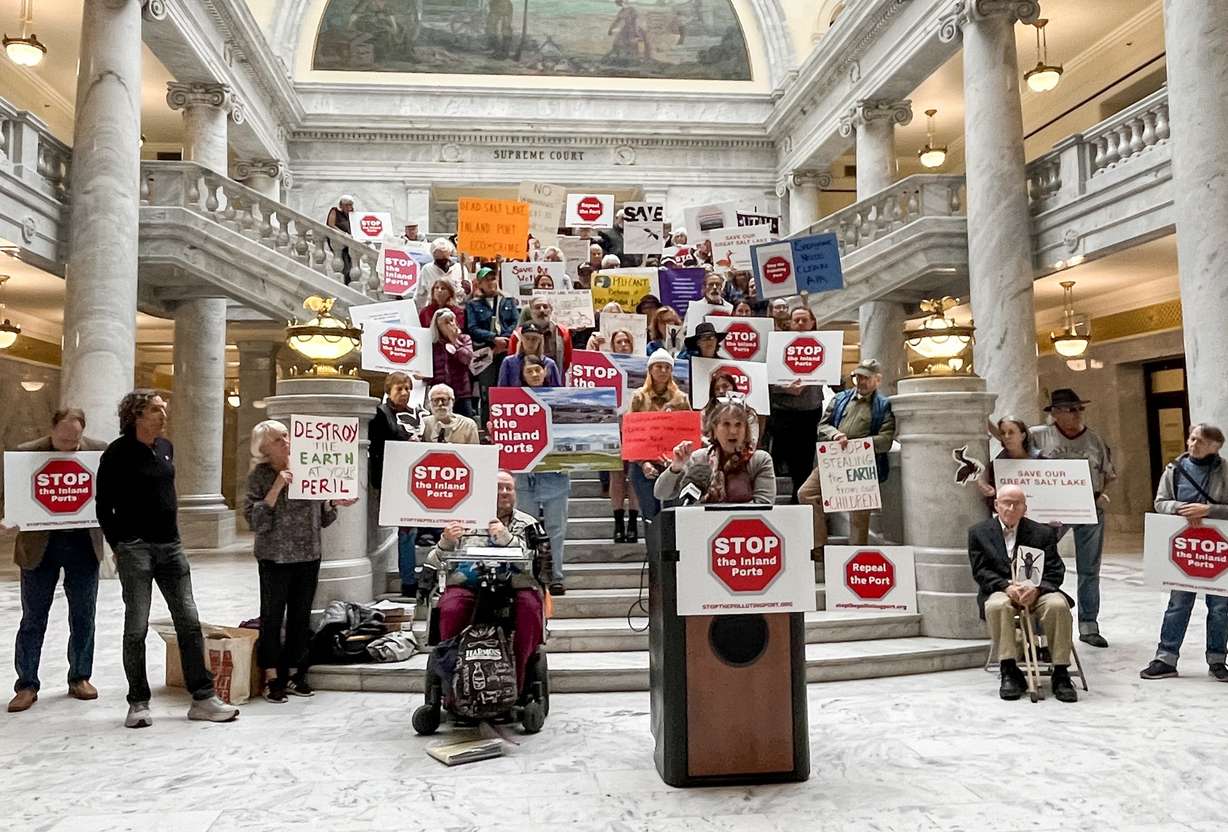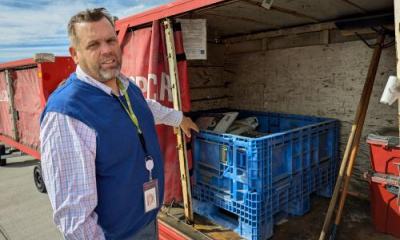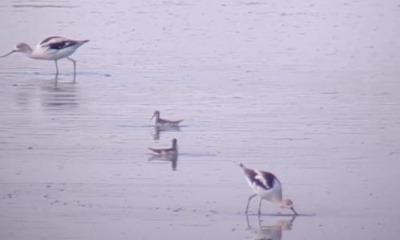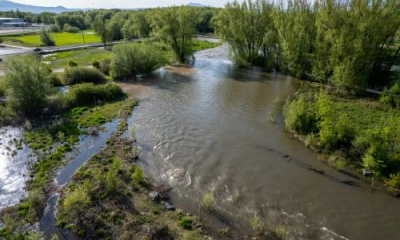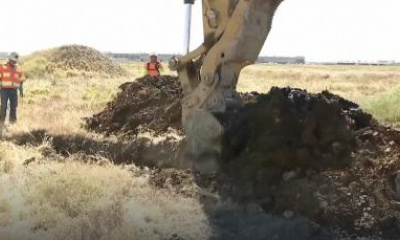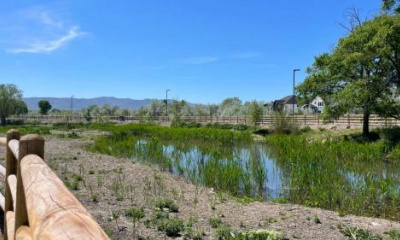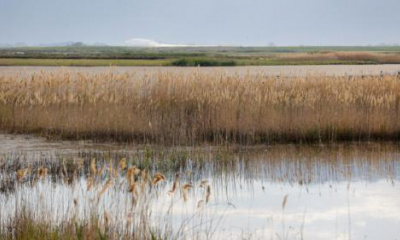SALT LAKE CITY — Members of the Utah Inland Port Authority's board of directors voted Monday to adopt a new policy that the agency says will help mitigate impacts to the state's vital wetlands as the state continues to grow.
However, multiple environmental groups, including groups that staged a rally before the board's meeting, argue that the policy doesn't go far enough in that effort and could harm tens of thousands of acres of wetlands, including those by the Great Salt Lake.
Inland port's new wetlands policy
The new policy that the board approved creates new guidelines for handling wetlands that are found within any inland port project area within the state.
It allows for incentives to be provided to landowners in the area who provide projects that don't "adversely impact" wetlands, restore or enhance wetlands, establish new wetlands, or permanently preserve wetlands, said Mona Smith, environmental and sustainability manager for the Utah Inland Port Authority.
Funding would come in different ways for different project sites scattered across Utah. The inland port has a deal in place with Salt Lake City, where tax differential funds can go toward wetland mitigation projects.
The plan notes that at least 1% of the tax differential for a project area outside of Salt Lake City but within the Great Salt Lake or Utah Lake watershed "shall go toward wetland mitigation within or at a location with a nexus to that project area upon approval" of the board. At least 1% of this tax differential fund for all other areas of the state may also go into mitigation efforts, according to the plan.
"With final say from the board, tax differential funds designated toward wetland may be used for water purchases, land easements for natural buffer zones, wetland characterization, as well as wetland mitigation methods identified by the (Environmental Protection Agency) and the Army Corps," Smith said.
The policy notes that some projects should be prioritized, as well. These include projects near a wildlife or waterfowl management area or if the project partners with Great Salt Lake Watershed Enhancement Trust, a group the Utah Legislature formed to get water to the drying lake.
It also calls on the port to coordinate "wetland mitigation expenditures" with the Utah Department of Natural Resources and the Great Salt Lake commissioner. In all, Smith said its framework goes "above and beyond" any state and federal regulatory requirements.
Ryan Starks, executive director of the Governor's Office of Economic Opportunity, and a Utah Inland Port Authority board member, said he believes the policy will serve as a "proactive" way to manage the wetlands as the Wasatch Front grows in the coming decades.
"I think this wetland's policy is really, really good," added Ben Hart, executive director of the Utah Inland Port Authority. "This wetlands policy ensures that not only will we not have a negative impact on the wetlands of the Great Salt Lake, it gives us a chance to help protect."
Conservation groups push back
But some conservation groups don't see it that way.
"It is a gesture ... but it doesn't go nearly far enough," said Deeda Seed, a senior campaigner for the Center for Biological Diversity. "(One percent) can amount to a very tiny amount of money to help protect wetlands — it's far outweighed by the destruction that they're going to cause."
The center helped co-author a report with other local groups that the organization Stop the Polluting Port released Monday ahead of the meeting, which states that nearly 53,000 acres of wetlands "will be lost" through inland port projects across Utah's northern half. Most of the impact areas are by the Great Salt Lake.
The report includes nearly 6,000 acres in Weber County, but Hart said that a project there is now "on hold."
The natural areas will be "paved over" or impacted by air, noise or light pollution caused by more trucks and trains, the report asserts. This can add to water concerns and increase the amount of harmful pesticides used because more people will be working close to the wetlands, it adds.
Dozens of people also showed up to a rally held inside the state Capitol rotunda prior to the meeting, where they blasted projects that cut into wetlands, particularly the wetlands by the Great Salt Lake.
"Wetlands have been referred to as the kidneys of the Earth for their ability to filter out pollution — things like heavy metals, chemicals and excess nutrients from water," said Chandler Rosenberg, deputy director of the Great Basin Water Network. "This doesn't make sense that we're saying that we're trying to save the Great Salt Lake on one hand, while we're fast-tracking the destruction of its wetlands with public money on the other."
Hart and other inland port leaders said the policy was created in part with the help of the public, but "certain stakeholder groups" weren't as cooperative. They said some of the most vocal groups didn't participate in a 45-day comment period on the plan, which may be why some are dissatisfied.
"I feel bad that maybe this policy could have been a little bit stronger had we gotten everybody's participation," he said.
Those comments irked Seed. She said she made policy suggestions to Hart in a meeting last week. Meanwhile, she and others at the rally said the board's public comment process policy makes it difficult to provide any feedback on projects.
A Tooele County resident said the board introduced a Tooele County project during a meeting in southern Utah that didn't include an option to provide feedback remotely, for instance.
"We're feeling very unable to contribute to this process by how you've structured comments and so forth," Seed told the board.
Future changes on the horizon?
The board did accept a copy of Stop the Polluting Port's report during the meeting so experts could review it, but it's unclear if any of it will be implemented. While the board ultimately voted unanimously to approve the new policy, its members appeared to agree that the policy could be amended in the future.
Salt Lake City Councilwoman Victoria Petro, who also serves as a nonvoting member of the board, called it a "first step" for this reason.
"I'd love to see us be even more assertive in our capacity, so anyone that is participating in our areas ... you must have a demonstrated, documented strategy for how you're going to protect wetlands," she said.
The inland port's critics said they also hope that the new policy is just the beginning of new changes that seek to mitigate environmental impacts.
"There's a lot that they can do if they choose to," Seed said.

